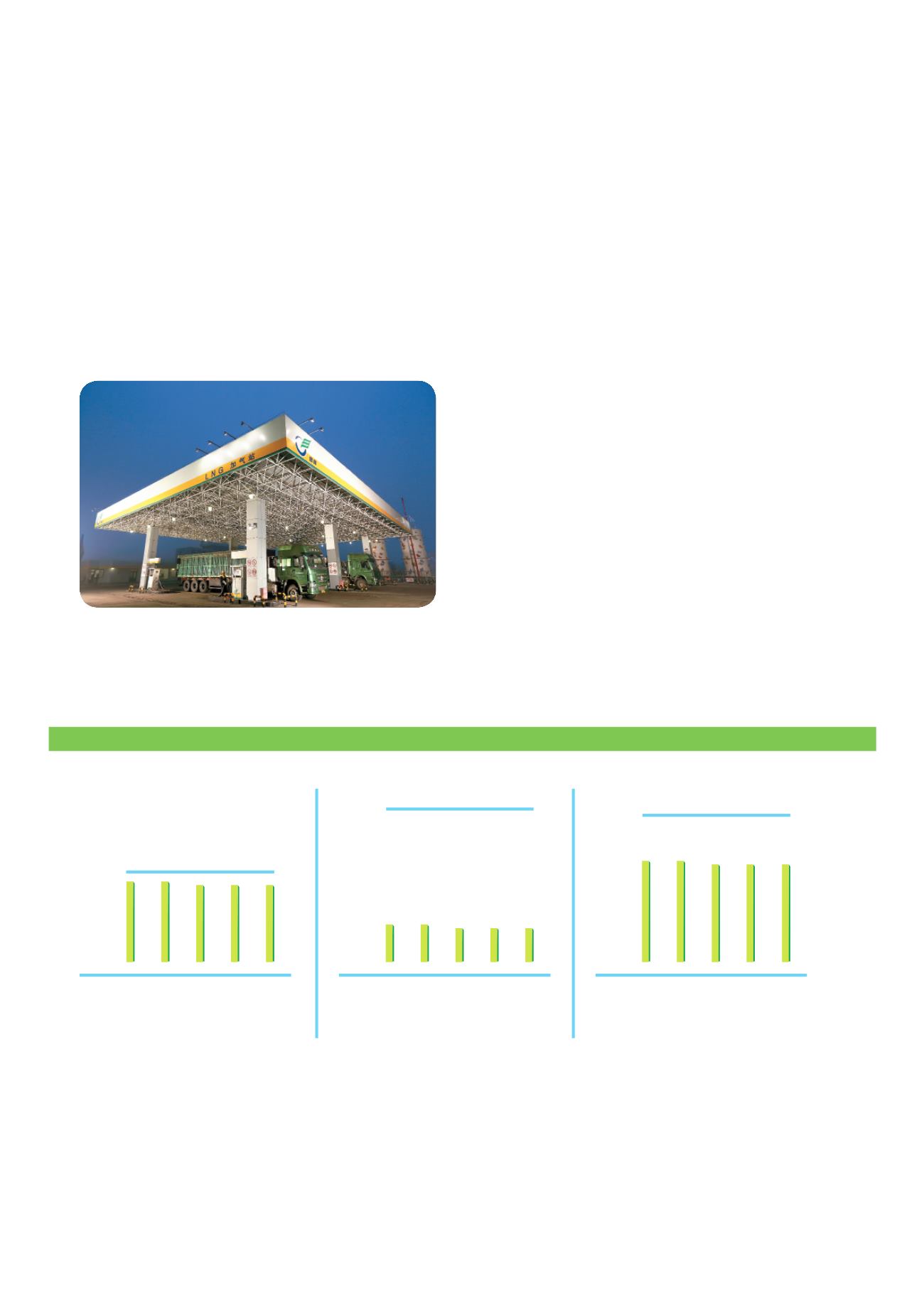
26 • Sustainability Report 2012
Vehicular Clean Fuel
In 2000, we began the building and operation of
five dedicated liquefied petroleum gas (LPG) filling
stations to serve Hong Kong’s fleet of 18,000 taxis
and most of light buses. The use of LPG reduces
the emission of respirable suspended particulates
and helps improve air quality. These activities
have since expanded onto the mainland and
we currently operate nine compressed natural
gas (CNG) and liquefied natural gas (LNG) filling
stations in Shaanxi, Shandong, Shanxi, Liaoning,
Henan and Anhui provinces. These filling stations
not only serve the fuel needs of heavy-duty trucks
in the surrounding regions, but also provide
an alternative source of supply for our city-gas
businesses in the vicinity. Providing a much cleaner
alternative to diesel fuel, we expect to see growing
use in these fuels – currently five further filling
stations are under construction and natural gas is
increasingly being used to power other forms of
transport.
Emission Levels of Gas Production Plants (Hong Kong)
0.02
Years 08 09 10 11 12
0
0.1
0.2
0.3
0.4
KG/TJ
SO
x
Emission Level
Equivalent Licensing Limit
1
4.20
Years 08 09 10 11 12
0
2
6
8
10
KG/TJ
NO
x
Emission Level
Equivalent Licensing Limit
1
11.92
Years
0
5
10
15
20
MT/TJ
08 09
CO
2
Emission Level
10 11 12
Design Limit
2
In our activities on the mainland, the emission
of CO
2
, SOx and NOx is minimal as natural gas
provides the basis for our city-gas operations there.
With the Chinese government’s promotion of
natural gas as the leading clean fuel of the future
and as we expand our portfolio of city-gas
businesses, our activities will make an ever
increasing contribution towards a cleaner and
greener environment throughout the country.
1 “Equivalent Licensing Limit”(kg/TJ ORm
3
/TJ) =“Weighted average of actual licensing limit”(kg/hr or m
3
/hr) ÷
production rate of the plants for the year 2012 (TJ/hr).
2 As there is no Licensing Limit for the discharge level, we apply the design limit of our production plants as a
reference point for the emission level.


